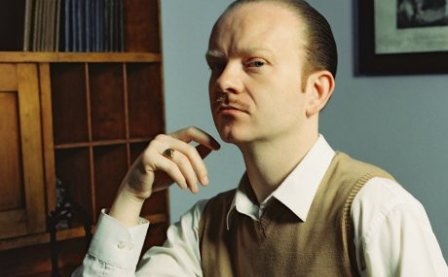Tyondai Braxton formed Battles in 2004 with John Stanier (Helmet, Tomahawk), Ian Williams (Don Caballero), and David Konopka. They released a string of EPs over the next couple of years, fostering greater notoriety with each subsequent record. Their full-length debut, Mirrored, arrived in 2007 and topped many critics’ year-end lists. Indeed, with Battles being a collective of such formidable talents, it's not hard to understand why few people know of Braxton’s work outside the group. Of course, part of the problem is that Central Market marks Braxton's first solo album since 2002's History That Has No Effect, but he makes good use of the album's seven tracks to shed light on just how much his vision contributed to Mirrored’s success. And from the sound of things, the guy had something to prove.
The mostly instrumental songs primarily showcase Braxton’s compositional skills, particularly in the minimalism of John Adams and the modernist techniques of Igor Stravinsky. While some tracks blast forth with a blissful cacophony, linking Braxton to his noisier days, many tracks are classically additive, starting with an original theme and then building in momentum through additional layers. Album opener “Dead Strings” is a perfect example of this: A digital metronome counts a standard 4/4 beat while a synthesizer teases in the background. Ghostly strings (courtesy of the Wordless Music Orchestra) join the procession, adding a frightening second layer, while the momentum simmers for a couple of minutes until a pattern eventually develops and repeats. Drums stutter at random, a perfunctory bugle yelps, and a feeling of dread builds, something akin to walking near a cemetery late at night, where tensions run high and every sound multiplies the paranoia.
Indeed, listening to Central Market can be a visual undertaking. You can see the pictures he paints with the music: clear, lucid scenes drawn with bold primary colors. Centerpiece, “Platinum Rows” launches a galloping Technicolor romp through the back lots of Disney’s Fantasia. After a prolonged mechanical surge and an odd keyboard belch, strings rush forward to establish a rolling tempo. A snare drum taps out a breakneck pace and the brass section signals a nonsensical charge. Braxton enters with distorted wah-wah vocals then switches to a synthesized kazoo. Somewhere Thomas Pynchon is cheering. It’s all well-ordered mayhem like a Stockhausen piece, majestic and soaring like Copland, and with a heavy dose of Ravel (the snare drum from Bolero, in particular).
The rest of the tracks feel somewhat misplaced: “The Duck and the Butcher” continues the Copland premise, but isn’t as adept at advancing an individual theme, while “Uffe’s Woodshop” and “Opening Bell” could be outtakes from the Battles sessions. In fact, “J. City” sounds like a second shot at “Atlas.” And there's the rub: the strongest tracks here make a case for Braxton’s compositional skills; the rest feel like recycled tales from his nights out with Stanier and Williams, an unfortunate byproduct of placing them within this context. Still, it’s all very affecting. In a word, vivid.
1. Opening Bell
2. Uffe's Woodshop
3. The Duck and The Butcher
4. Platinum Rows
5. Unfurling
6. J. City
7. Dead Strings
More about: Tyondai Braxton




